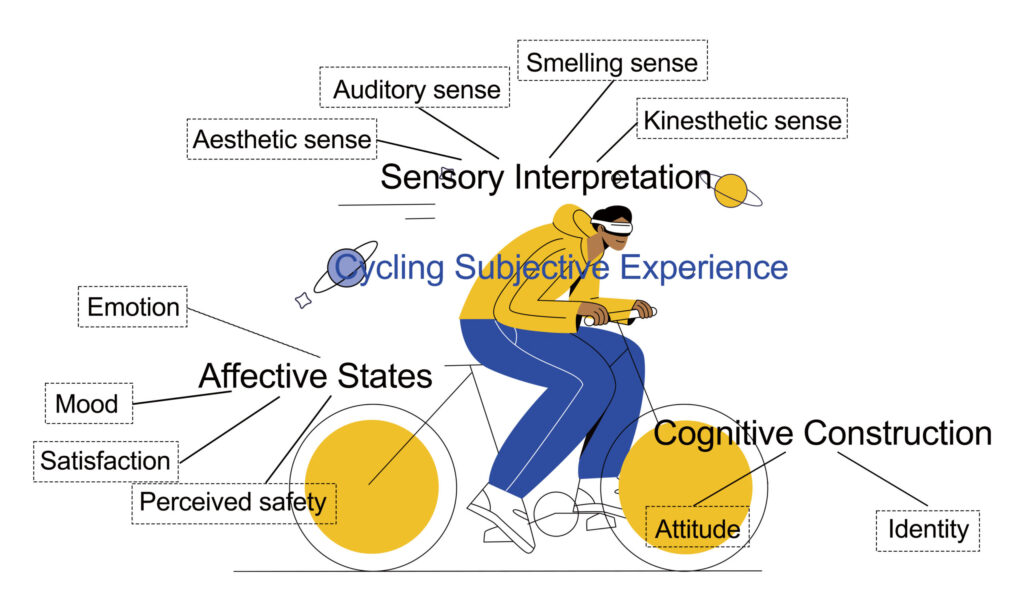A comprehensive analysis of “slow streets” programs in 30 US cities
Transport planning and policy is increasingly being called to action in ways that differ from prior generations. Some pressures stem from a need to change the character of city streets that differ from those currently found in most auto-dominated urban environments. These pressures were acutely felt with the escalation and disruption of the COVID-19 pandemic.
Many cities responded by abruptly changing the character of select streets, with the implementation of street experiments, most commonly “slow streets.”
This project explores “street experiments” as an opportunity to transition to paradigms that prioritize forms of sustainable mobility. Components identified in our study could help seed a much-needed break-through in how city streets are used, designed, and standardized.
Our study accomplishes the following:
- Inventories street-focused emergency response measures from the 55 largest cities in the US
- Devises a rubric to systematically assess and locate characteristics of these measures that might enable a transition.
- Builds an important baseline of evidence for future research efforts, including a 6-month follow-up assessment
- Provides much-needed evidence on early stages of street experimentation and transition process of urban mobility systems.

Initial results show:
- Among 30 of 55 US cities, the most common emergency response affecting streets, as induced by COVID, are experiments with “open street” or “slow street” applications
- Relative to previously studied street experiments, slow streets appear spatially extensive, longer lasting, and substantive in character, suggesting potential transformative qualities
- 5 “innovator” and some “early adopter” cities are using COVID conditions to test new forms of streets and in some cases, street networks
- “Innovator” and some ‘early adopter’ cities excelled in conveying a vision for alternative future, articulating implementation pathways, leveraging political capacity, and circulating information.
- “Innovator” cities exhibited efforts to embed new street programs into existing policy efforts, sometimes incorporating a network approach to street alterations
- Select cities demonstrate efforts to evaluate and more deeply embedding these experiments into long-term thinking
- Select cities indicate the experiments might become permanent
- We found evidence of ambition to, i.e., “reimagine” streets as public spaces, with high levels of support and engagement from elected/appointed city officials
- Few cities demonstrate cross-departmental or intergovernmental collaboration; few explain evaluation efforts or pathways to scale up
- In a 6-month follow-up assessment, 50 percent of programs (15 cities) are in progress, including 6 cities which expanded and/or made permanent some experiments; the remaining are reduced, discontinued or lack sufficient status information
- The few expanded programs indicate an interconnectedness between “feasibility” components, establishing synergies with on-going policy, and engage with the public for evaluative and participatory endeavors
Policy implications:
Results point to “slow streets” as highly transferable policies, quick to gain traction both among the public and policymakers, and capable of accelerating the typical slow pace of public administrations. There is evidence that “innovator” and some “early adopter” cities excelled at articulating implementation plans and leveraging existing, publicly vetted sustainability polices (i.e., bicycle master plans) and on-going street improvement programs (i.e., Vision Zero). The evidence suggests that pre-existing capacity and policy support augmented specific planning efforts which benefited the feasibility of the programs and possibly contributed to enhanced legitimacy of the street experiments.
Additionally, advanced and enduring programs show collaboration with multiple parties, i.e., departments of public health, urban planning, parks and recreation, police, and then also advisory boards, city councilmembers, and Mayor’s offices. The planning and implementation for such a program might exceed the capacity and traditional breadth of knowledge for many Departments of Public Works. This suggests a specific role for and benefit of inter-departmental and -governmental coordination of street experiments.
Furthermore, these research efforts provide evidence of enthusiastic and continued support from policymakers and from the vocal public. Public acceptance appears high in the few programs with demonstrated extensive public engagement and evaluative efforts. This suggests that not only are staff allotted (ample) time for these tasks, but a potential synergistic relationship between the documentation of public support and public support itself. Evidence suggests that authorities work with stakeholders not conventionally associated with active mobility or transportation. With many cities tying street experiments to economic recovery, the business communities (i.e., retail, restaurant) have shown to be valuable partners in transformations.
Given a post-pandemic environment, personal mobility habits may easily revert to pre-pandemic characteristics. To eschew regression toward unsustainable practices and advance towards sustainable and active mobility aims in streets, evidence suggests that select cities are cementing notable changes. Local government should capitalize on these experiences but also be certain to give voice to communities traditionally underserved and overlooked, garnering wider acceptance for sustainable practices for transport systems.
Future questions include:
- What social, political, regulatory, or organizational conditions facilitate or hamper the street experiments?
- What is the role of previous experience with crises or experimentation?
- What was learned from the experiments and what becomes of their successes or failures?
- What kind of experimentation, over the long-term, generates regime change?
This research article is published in Transport Policy (click here to view).
Citation: Glaser, M. & Krizek, K. (2021, in press) Can emergency response measures trigger a transition to new transport systems? Exploring the role of “street experiments” in 55 US cities. Transport Policy. https://doi.org/10.1016/j.tranpol.2021.01.015
This project is running since March 2020. Photo credit: Paul Supawanich, San Francisco, CA



